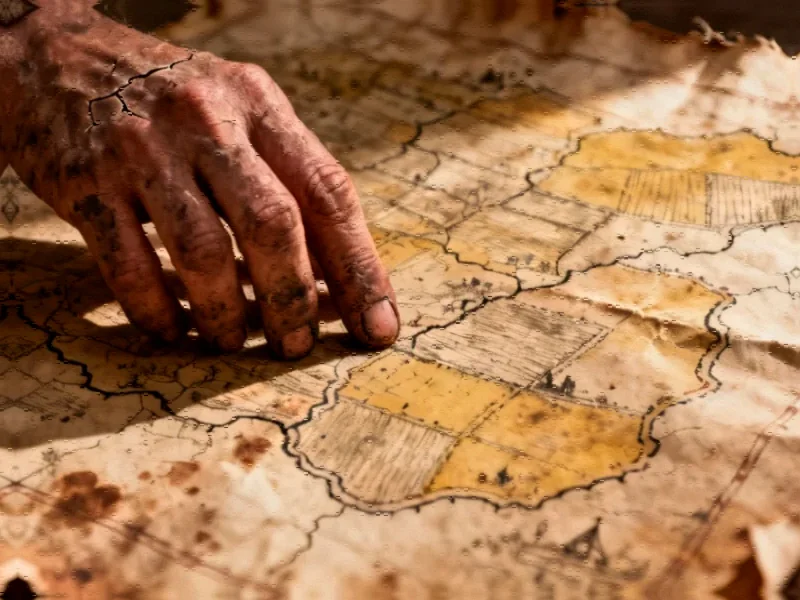Community-Driven Preservation Effort
Across the rolling hills and historic valleys of Wales, a grassroots movement is quietly safeguarding the nation’s linguistic heritage through digital means. The Welsh government’s recent call for citizens to submit traditional placenames has generated an overwhelming response, with approximately 200 entries received within just two weeks of launching the initiative. These submissions represent more than mere geographical markers—they encapsulate centuries of cultural memory, agricultural practices, and local legends that might otherwise fade from collective memory.
The project specifically seeks to identify and preserve Welsh language names for natural features and human-made locations that may be absent from contemporary digital mapping services. “These names tell the story of who we are and where we’ve come from,” explained Welsh Language Secretary Mark Drakeford, emphasizing how toponyms like Cader Idris (Chair of Idris) and Felin Wen (White Mill) connect modern Welsh identity to both legendary figures and everyday historical livelihoods.
Beyond Simple Translation: The Stories Behind the Names
What makes this preservation effort particularly significant is the narrative depth contained within each submitted name. Unlike simple translations between languages, these traditional Welsh placenames often encode specific historical information about land use, ownership patterns, and even local folklore. A field name might reference medieval farming practices, while a hill name could preserve the memory of a long-forgotten boundary dispute or legendary event.
Recent research highlighted by the government reveals an interesting trend in naming conventions: while most property name changes don’t involve language shifts, when they do occur, renamings from English to Welsh outnumber the reverse by three to one. This suggests a growing cultural reclamation movement parallel to the mapping initiative. For those interested in how communities are mobilizing to protect their heritage, the patterns reflect broader cultural revitalization efforts.
Institutional Framework and Technical Infrastructure
The current project builds upon existing digital mapping infrastructure developed through collaborations between specialized technical platforms and public institutions. Key partners include Mapio Cymru, the List of Historic Placenames, and the national parks of Eryri and Bannau Brycheiniog. This multi-organizational approach ensures both technical expertise and local knowledge inform the preservation process.
Looking at industry developments in data processing and storage, the technological requirements for managing geospatial linguistic data become apparent. The Welsh government’s initiative represents an innovative application of digital archiving principles to cultural preservation.
Broader Implications for Heritage Management
Beyond the immediate goal of preserving Welsh toponyms, the project forms part of a comprehensive strategy for safeguarding intangible cultural heritage. The government has outlined additional priorities including developing clearer guidance for authorities responsible for official placenames and commissioning research into the names of natural features throughout the Welsh landscape.
This methodological approach to cultural documentation reflects broader governmental initiatives that combine community engagement with systematic data collection. The parallel commitment to research ensures that preserved names will be contextualized within deeper historical and linguistic frameworks.
Global Context and Technological Synergies
The Welsh initiative occurs alongside international efforts to document endangered languages and cultural knowledge systems. Similar projects from scientific research communities demonstrate how specialized knowledge preservation requires both community participation and technical infrastructure.
Furthermore, the regulatory aspects of cultural preservation intersect with environmental and land management policies that govern how landscapes are officially documented and administered. The Welsh model offers a template for integrating cultural conservation with broader land stewardship principles.
Sustainable Cultural Preservation
What distinguishes this initiative is its recognition that linguistic heritage exists as a living tradition rather than a static artifact. By creating mechanisms for community contribution alongside institutional oversight, the project establishes a sustainable model for cultural preservation that balances authenticity with accessibility.
The enthusiastic public response demonstrates that digital tools, when thoughtfully deployed, can strengthen rather than undermine traditional knowledge systems. As this project evolves, it may establish best practices for other regions seeking to preserve their own linguistic landscapes against the homogenizing pressures of globalization and digital standardization.
This article aggregates information from publicly available sources. All trademarks and copyrights belong to their respective owners.
Note: Featured image is for illustrative purposes only and does not represent any specific product, service, or entity mentioned in this article.
